




Ringed by the staggering peaks of the Himalaya, Bhutan is a remote Buddhist kingdom where age-old traditions hold strong. Amid verdant valleys dotted with historic fortresses and shrines, delve into Bhutan’s rich culture with a private guide, discovering how everyday life is intertwined with Mahayana Buddhism. Meet with monks, nuns, farmers, and artisans; take part in ancient rituals; and witness firsthand the cautious evolution of this tiny kingdom with your presence, without any distraction or hindrances.
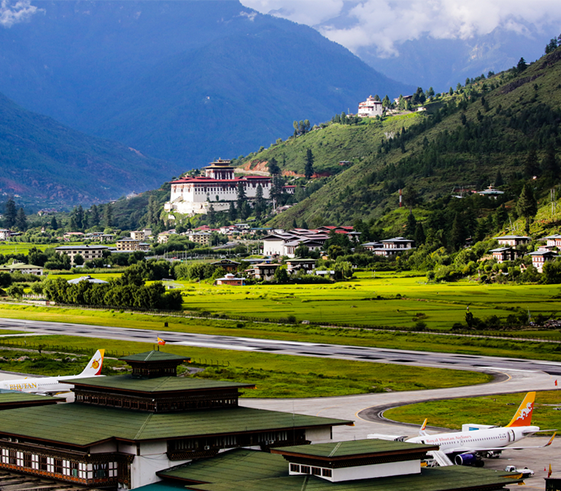
On a clear day during your early morning flight from Bangkok to Paro, you’ll be treated to the captivating views of the massive eastern Himalaya Snow peaks, including Kangchenjunga, which at 28,169 feet is the world’s third-highest mountain, and 24,035-foot Chomolhari, Bhutan’s holy mountain. Upon your arrival in Paro you will clear immigration and proceed to the baggage claim, where you will collect your checked bags, clear customs and continue to the arrival hall. Here, you will be greeted by your Bhutanese guide & driver who will be with you through out yur trip.
From the airport you will head straight out to Thimphu - the capital city of Bhutan - following the course of Pachu and Wangchu rivers. Thimphu is home to the government, royal family, and the head offices of the international aid organizations. Local shops entice with traditional weavings; Bhutanese silverwork; coral and turquoise beads and prayer flags. A number of cottage industries, including metalworking and paper making are found in Thimphu, and visitors often enjoy visiting their workshops to see artisans practicing on the crafts. Today’s sightseeing includes the Textile Museum, where Bhutan’s finest weavings and brocades are on display and if time permits we will visit the School of Zorigchusum where students undergo years of training in traditional thirteen arts and crafts of Bhutan.
In the evening, stroll and explore the city on foot or shopping in Crafts Bazaar for Bhutanese souvenirs for your loved ones back at home or for your memories in Bhutan. Thimphu is one of the few capitals in the world without any traffic lights and you will observe the dancing policemen controlling traffics. Your lodge for two nights in Thimphu is serenely set on the outskirts of the city in Motithang. This evening - our guide will provide an orientation of your journey to Bhutan.
HOTEL | Zhiwaling Ascent is located just outside the center of the capital city in a park like setting with panoramic views. This contemporary concept hotel, which is the first of its kind in Bhutan, has 20 spacious rooms designed in the most energy efficient way to capture sunlight all day and provides superb views of the surrounding scenery. Like its sister hotel in Paro, it is wholly Bhutanese owned and operated.
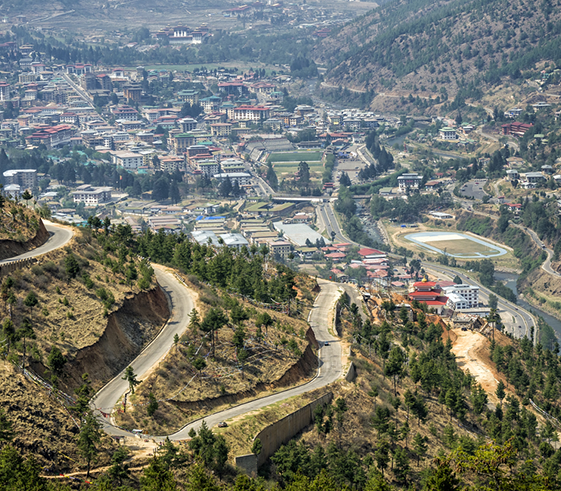
This morning drive up to see the tallest seated Buddha statue in the world at 51m / 169ft height, initiated and built on a prophecy made, facing towards the East, bestowing infinite love and compassion to all sentient beings in the universe. The giant statue houses enormous meditational house in the base and two storied chapels on the top floors. You will be fascinated at the fine art works crafted by the local artisans. Explore the marvelous shrine inside and the site also offers splendid views of the valley below.
You will then drive north of Thimphu to Dodena for about thirty minutes from town. From here you will walk over a typical cantilevered bridge spanning over the Wangchu river and gradually ascend up through temperate forests of oak, rhododendrons and other species of hard woods trees. Cheri monastery was established as the first monastic school in Bhutan in early 1620’s by Zhabdrung Rinpochee, the Unifier of Bhutan in the early 17th century. The Monastery serves as the monastic school for Buddhist Philosophy, metaphysics, mathematics, poetry and many other Buddhist studies. The serene setting and the sanctity of the place here favors one to meditate. Enjoy a delicate picnic lunch afternoon on the way back to the base in Dodena along the banks of the river.
On your way back drop by to the Pangrizampa school of Astrology where one can engage in teh readings of your past, present & future by the Astrologer.
Cheri Monastery Hike;
Hike Length: 3.2Kms / 2Miles
Hike Time: 2 hours Return
Elevation Gain: 260m / 860ft
Elevation Loss: 260m / 860ft
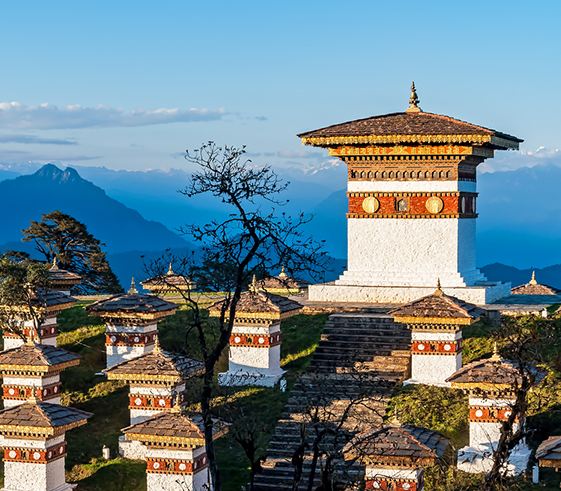
In the morning after breakfast at leisure,we will drive towards Punakha via 10,300 foot Dochu La pass, which in good weather offers 360-degree vistas across 200 miles of Himalayan peaks including Bhutan’s tallest peak and some of the highest unclimbed mountains in the world! There are 108 stupas adorning the pass and the scenic spot here offers plenty of opportunities for photography and walks around. And then descend down from the pass to the warmer valleys of Punakha.
Reaching the village of Sopsokha, enjoy an easy hike to Chimi Lhakhang, a small temple, between Wangdi and Punakha, the ancient capital of Bhutan. The temple is dedicated to Drukpa Kunley, affectionately called the Divine Madman. He is one of Bhutan’s favorite holy men in spite of—or because of—his irreverent methods of teaching the dharma some 500 years ago. There are about 25 young monks here undergoing monastic education. We will have lunch in a local restaurant in the vicinity of the temple.
End your day with the visit to the Wolakha Nunnery mounted over a hilltop with a good view of the surrounding valleys below. The nuns apart from their daily Buddhist studies and meditation also work on appliqué and thangka painting. The shrine inside is dedicated mainly to the God of Compassion, Chenrizig or in Sanskrit known as Avolokiteshvara.
Chimi Lhakhang Hike;
Hike Length: 2Kms/1.2Miles
Hike Time: 1.5 Hours return easy
Elevation gain: 20m/66ft
Elevation Loss: 20m/66ft
HOTEL | The Six Senses Punakha - This spectacular Punakha lodge takes on a more rustic rural feel complementing the warmer climate of its surroundings and offers sweeping views of the valley filled with rice paddy fields and dotted with traditional farm houses.

This morning we drive down to Hebisa village for an hour hike to Khamsum Yueley Namgyel Chorten (The Kings Temple). This jewel-like structure can be seen poking through the trees beyond the river. It is dedicated to the current king and was built by his mother Ashi Tshering Yangdon Wangchuck. There are several levels, each of which is densely packed with protector deities. There is a roof deck on the top floor which offers spectacular almost 360 views of the valley. The trail is gradual and takes you through fields of paddies and chilies and during wet months, you will see farmers engaged in their fields plowing with their oxens. We may take chance to render our hands and experience the rural farmer’s living in this part of the remote Himalayan kingdom. We walk back the same route back to Hebisa Bridge from where you will head out to a campsite by the Mochu river for a picnic lunch.
Punakha was the ancient capital of Bhutan until mid-1960s until it was moved to Thimphu. The valley hosts one of the impressive fortresses in the world. The temperate weather conditions favors for the cultivation of rice, chilies, vegetables and tropical fruits. The Central Monastic Body, presided over by the Chief Abbot of Bhutan comes down to this valley from Thimphu every winter to take advantage of the warmer weather for about six months.
After lunch, we will head down to visit the dominant and impressive Punakha Dzong, set at the confluence of the Mo and Pho (or “mother” and “father”) Rivers. Built by Shabdrung in 1637, this massive fortress is one of the holiest in Bhutan and holds some of the country’s most sacred relics. Bhutan’s dzongs originally served three purposes: they were fortresses, administrative to the most obvious centers for local government, and a residence for the monks and place for their religious activities. In days of yore—during Tibetan invasion or wars between the valleys— dzongs also acted as strongholds, protecting their inhabitants. The central monk body moves from Thimphu to Punakha every winter to take advantage of Punakha’s temperate climate. Take your time to explore and admire the architecture and photography is allowed in the courtyards.
Khamsum Yulley Namgyal Stupa Hike;
Hike length: 3Kms/1.8Miles return
Hike Time: 2 hours return
Elevation Gain: 241m/795ft
Elevation Loss: 241m/795ft
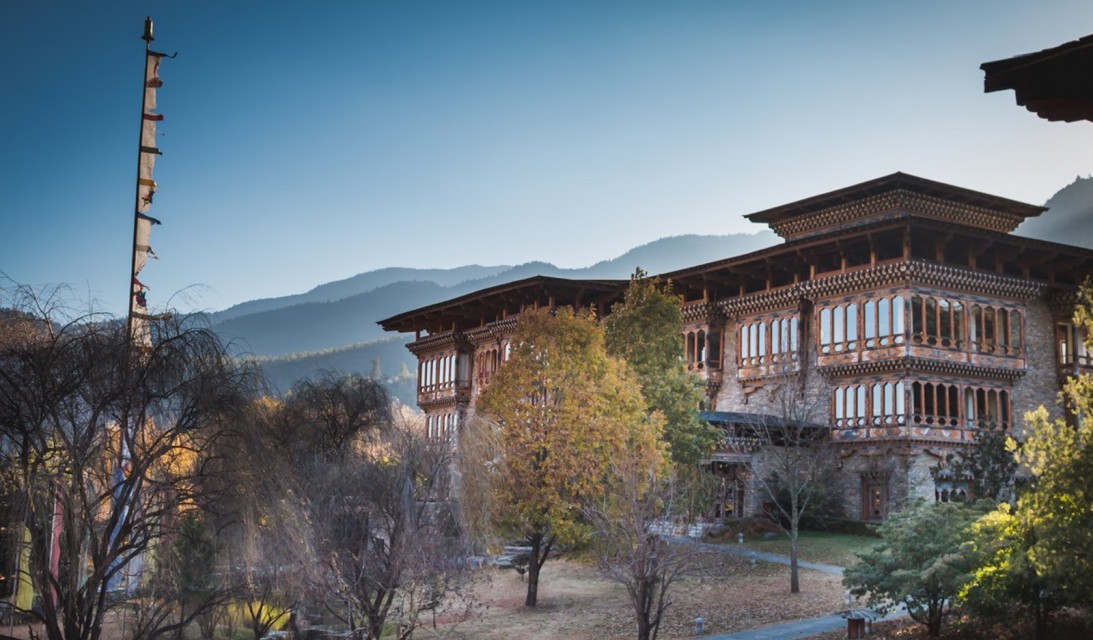
Today we drive back to Paro, crossing over Dochula Pass again and following the course of Pachu river to Paro, ‘the rice bowl of the country’. The Paro rice is sold even in North America and Europe. Encapsulated by views of massive Himalaya peaks, Paro is a small historic town in western Bhutan with tiny streets and brightly painted wooden shops. The town lies on the banks of the Pa Chu (Chu means “river”), which winds through the bucolic Paro Valley, once the hub for trade with Tibet in the North.
Ascend a short hill up to the most obvious landmarks in the valley, the Ta Dzong, a circular fortress that once protected this valley from Northern invasion. The impressive watchtower commands sweeping views of the valley below. It also houses Bhutan’s National Museum, which, since 1968, has been the home of the country’s most cherished relics. Walk down to the great Paro Rimpung Dzong which once barricaded the invasions from the North several times. The University of El Passo in Texas USA has borrowed the architecture of this fortress and has a wonderful relationship with Bhutan and some Bhutanese students study there on scholarship. The holywood moview "Little Buddha" is also filmed in the courtyards of this Dzong. Explore inside the Dzong and walk down towards the cantilevered bridge spanning over the Pachhuriver. Across the road, there is a Buddhist Art Gallery where local master artisans are seen working on their painting works. You may want to observe and if interested go through their works in the sale room.
HOTEL | Zhiwa Ling Heritage is set on 10 acres in the Paro Valley, within easy reach of Bhutan’s most revered temples and monasteries. From its traditional Bhutanese architecture to its elegant temple made with 450-year-old timbers to its Swedish under-floor heating, the hotel seamlessly combines past and present. This hotel has received the National Geographic Accolade for being the most Unigue & most sustainable hotel in the world in the year 2015 - The National Geographic Unique Lodge of teh World.

In the morning, drive up to the base of Taktsang to start your hike to this iconic monument, perched on a vertical granite cliff 2500 feet above the valley floor. The legend of Taktsang dates from 747 CE, when Guru Rinpoche, in the wrathful form of Guru Dorji Droloe, arrived here on the back of a tiger and subdued the evil spirits of the region. You drive to the trail head and, like many pilgrims before, hike up a mountain path toward Taktsang. After about one hour of rather steep hiking, you can rest for a while at a small teahouse with wonderful views of the monastery. If you choose to walk another hour, you can get an even closer look from the small chorten directly opposite. The final stretch climbs down—and then back up—750 steps, crossing a gorge over-laced with prayer flags to arrive at the incredible destination. Enjoy the walk and the experience the hidden waterfall around the corner.
In the evening, visit one of the oldest temples in the Himalayan region dating back to 7th century. Kichu Lhakhang (The wish fulfiling tmple) was one of the 108 temples built overnight by King Songsten Gampo of Tibet in order to pin down the giant ogress who was obstructing the spreading of Buddhism. You may also want to talk to some older folks who will be seen here most of the time circumambulating the temple and making prayers. They will be happy to talk to you. And then drive down to main town for last minute shopping or stroll around. Enjoy the last night of your Bhutan trip with your new found freinds over a delectable dinner in your hotel. Note: Make sure to book a traditional hot stone bath to expereince after your hike today.
Tiger’s Nest Temple Hike;
Hike Length: 13.2Km/8.2Miles
Hike Time: 5-6 Hours Return
Elevation Gain: 700m/2,300ft
Elevation Loss: 700m/2,300ft
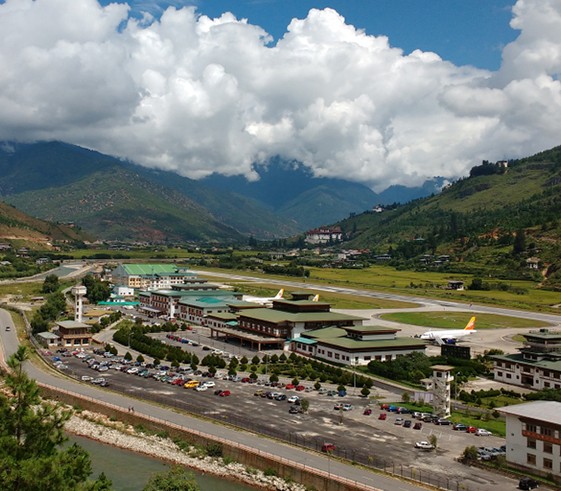
Today, your guide and driver will take you to the airport in the morning and bid their farewells from there.
We hope you had a wonderful time in Bhutan.
TashiDelek & Bon Voyage !



